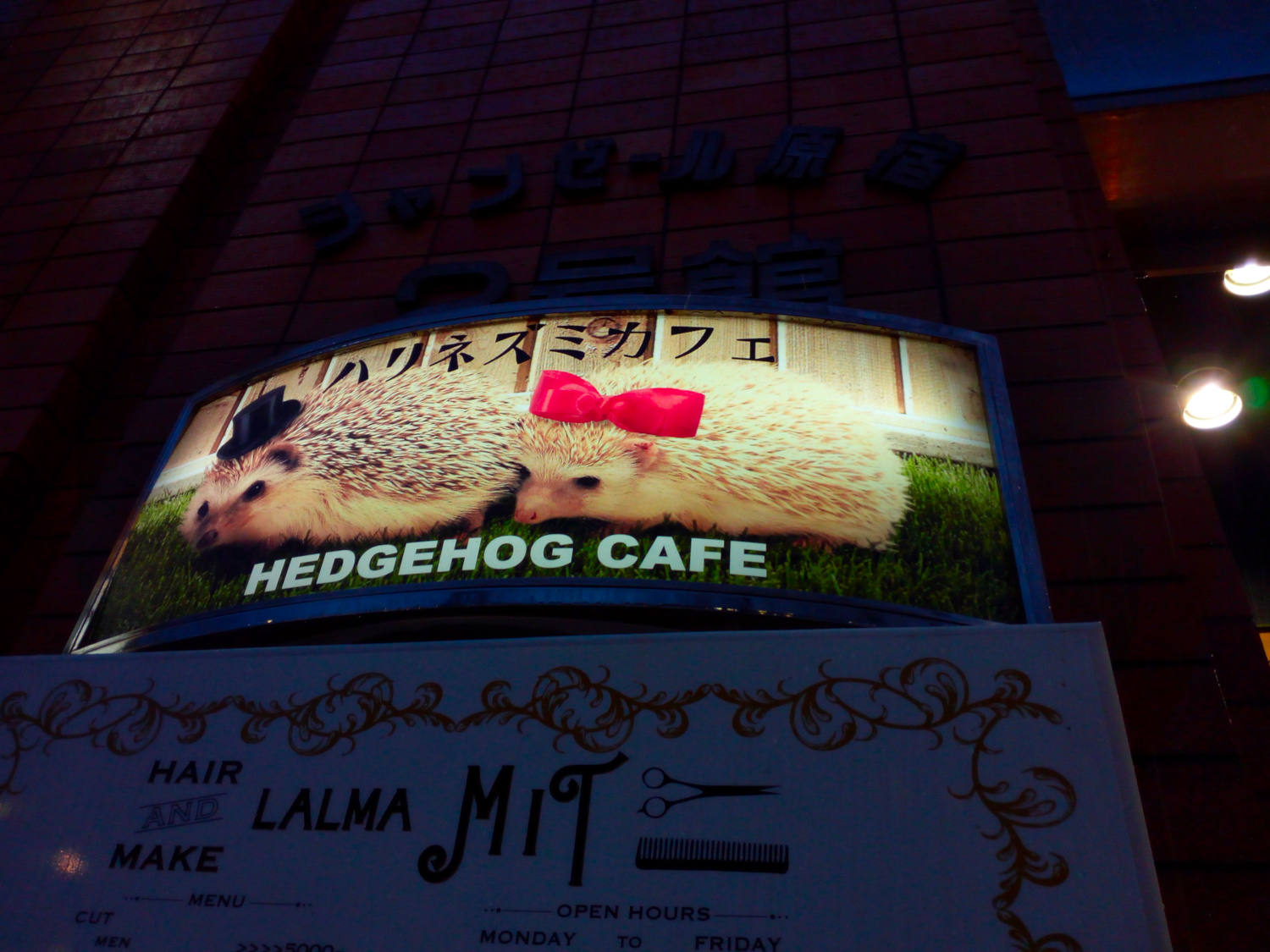Thoughts on 日本, part I
Of the three months I spent in the land of the rising Sun, this first part is about Tokyo city. #japan #tokyo #travel #sakura #maidcafe
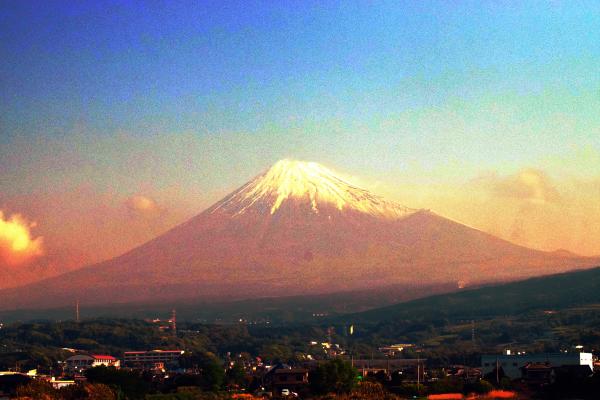
Japan, Earth’s pervert uncle.
–John Oliver1
Yes!, yes, on my first week there—on my first bloody week!—I would come to learn just how very true that quote above is. Which may say something about me, but I assure you, it says a lot more about that country! But we will get to that.
Japan
So it was early March (ahem, of last year…) when I set out to Japan—the proverbial land of manga, sushi, and cute weirdness in general—for a three month internship.2 En route I passed through Switzerland, home of course to mild winters, and cheap watches.
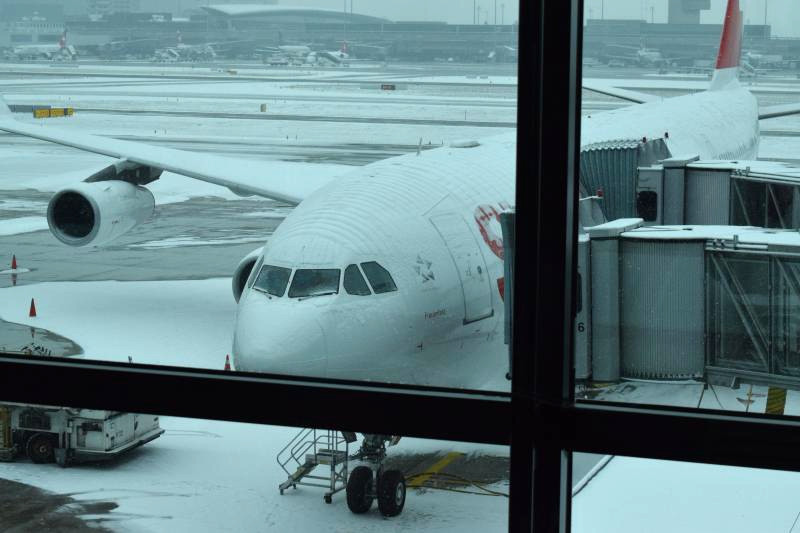
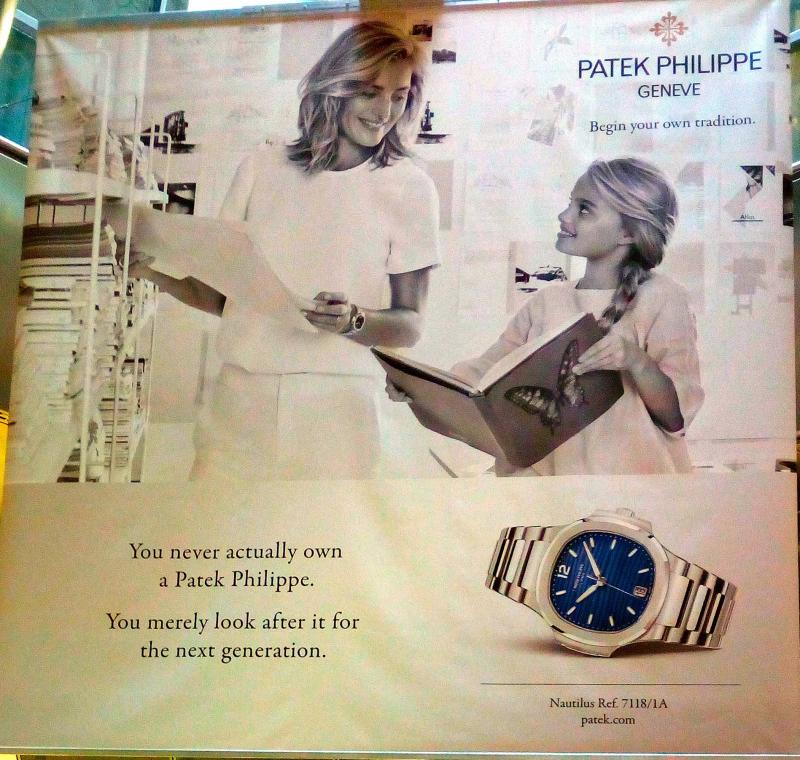
I touched down in Japan in the early hours of Friday, and much to my surprise, cleared customs rather quickly (“Come to Japan in business or tourism?” “Ah, I am actually an academic, I came to visit a professor…” [stamps passport, and before I could finish talking] “Ok just write that here and off you go. Sayonara!”). Of course, before customs there is the fingerprinting part—yes, since I think ’08, all “gaijin” (foreigners) get fingerprinted—and after stamping your passport, they inquire about your checked luggage.
Next was the adventure of carrying all that luggage through trains and the famously (over)crowded Tokyo Metro, up to the (no less crowded) Shinjuku area, to finalise my lodging arrangements. To account for baka gaijin (“idiot foreigners” – a redundancy, in the minds of many a Japanese), who for some reason almost never speak Japanese (go figure!) the housing agency actually hands out a sheet with images of buildings and shops from Shinjuku station up to their offices. If you are thinking “well, couldn’t they have just given you, you know, a map?”, they could have, of course, but it would have been useless: Japanese maps make next to no sense, and the Japanese don’t seem overly comfortable with them either. This even comes mentioned in tourist guides! Case in point: when, during the weekend, I went to discover where exactly my hosting institutions’ offices were located (so that I would not arrive late on Monday), I ended up showing the address to a security guard in a building I knew was nearby, and asking for the exact location. Always very politely—as is always the case with the Japanese—but not knowing a word of English (which is also very usual), he tried to help me as much he could, but to no avail. Until an employee came in who spoke English, and I showed her the address, and both she and the guard peered over a computer screen, arguing about a Google Maps search. And, fifteen minutes later, they were able to tell me that the building I was looking for, was just behind the one we were in!! So as you can see, maps and address, don’t really help you all that much…3
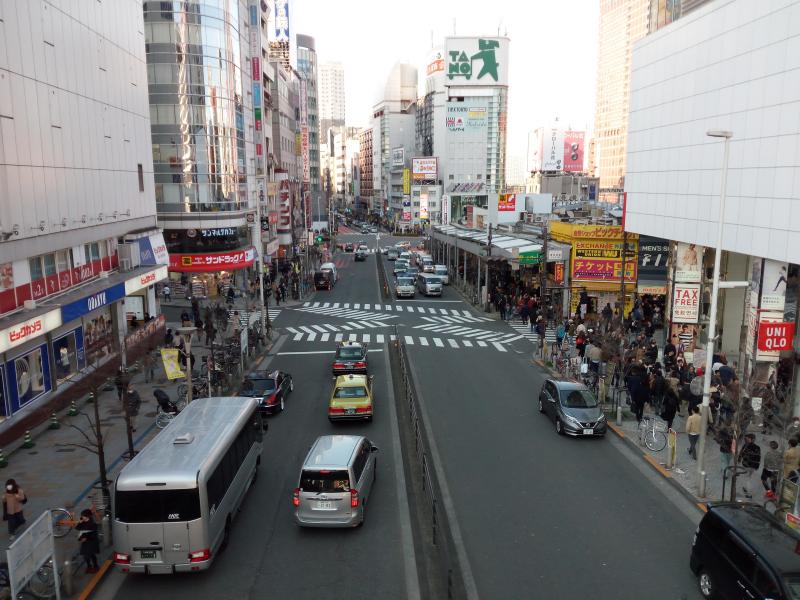
But going back to Shinjuku, I finally arrived at the offices of the housing company, only to be handed the paperwork I was required to read before signing the lease agreement. Try to imagine: you are de facto awake for some 30 hours, tired from carrying yourself and your luggage halfway across the city—after having crossed halfway around the world—but before being able to go home for some much deserved sleep, you are made to read reams of paper, about the gazillion of reasons they have to evict you, the other gazillion things that are forbidden, the very detailed protocol for garbage disposal—face palm, right?!—the importance of keeping the place clean because of the moist climate, etc, etc… You cannot just gloss over it either, you have to read once yourself, and then the person attending to you will go over it with you one more time.
By the time I left, I must have really looked like a zombie. And I was given a map to the house I would stay in, so guess what?—I got lost again! By the time I was finally in my room, it was late afternoon (remember I had landed early in the morning). It was small (less than 10m²), but that is quite normal in Japan. The reason is not hard to see: Japan has a population of ~126 million people, which is about half of that of the United States—but the country’s area is less than that of the state of Montana (~4% of the area of the U.S.). So lots of people (roughly 14 million live in Tokyo alone), but not lots of land! This ensures that real estate prices are always at a permanent premium—which in turn causes houses to be built as small as possible.4
And lastly, before beginning with the tales of Tokyo, two of my fellows tenants suffered one of those screw ups that us Westerners usually assume to be impossible to happen in Japan. The flat we were going to, had just recently been converted into a shared house (before that it had been an English school, go figure). Which meant that the tenants that were already there (and me) were living into a brand new share house—which is supposed to be an awesome thing! And for me, indeed it was, but for the first two to move in, things started really badly. The entrance to the building, you see, is always open—as in, you don’t need a key to get into the building—but only from 04h00 until 23h00. If you arrive between 11PM and 4AM, you need to take a sort of service entrance, in the back of the building, which requires a pin code to unlock. I was given the pin when I arrived, but when the first two tenants moved in, apparently nobody thought of this… until one of them returned after 11PM and found himself locked out!! Not the sort of thing one expects in über-efficient Japan, right? But anyway, in the end everything was sorted out, so let’s move on…
Tokyo
As mentioned above, I arrived on Tokyo on a Friday, which was great, I thought—sightseeing weekend! Or so I thought—what actually happened was I was so jet-lagged that I mostly languished in bed, waking up by tea time… (at that time the time difference with Portugal were a whopping 9 hours, after all…). Japan being also the land of (over)work discipline, by Monday I was thoroughly pissed at myself: I just wasted two full days, and from then on I would have to start spending the days (literally!) at the office. What actually happened on Monday though, was that I was told to go there after lunch hour, and just had to take care of a small amount of bureaucracies, and then—to my utter astonishment—was told “see you tomorrow”. So, with the better part of an afternoon to kill, I ended up in Harajuku.
Under normal circumstances—Harajuku being one of the weirdness hotspots in 東京—that would have meant a gazillion of photographs.5 But unfortunately it was pouring showers (the winter in Japan is not the rainy season, that dubious honour falls upon the summer months; when I got there it was half way to Spring already, when the showers gradually become more and more frequent). So I just strolled around until my thick and hooded—but not exactly water-proof—coat had had enough, and then ended up in Starbucks (for the fifth—or thereabouts—time in my life). Which should hint to you that I am not a particular fan of the franchise—so why did I choose it, being in Japan of all places? Well—other than the aforementioned pouring showers—it was because it was the one place where I was confident that you cannot smoke. In Japan, you see, while people are very conscious about pretty much everything, they are so in the typically sui generis Japanese way—and smoking is no exception. And hence, on the one hand, you cannot smoke even on the streets (!), except in designated places (I kid you not)—but on the other hand, restaurants and bars are fair game, even if the place is small. You can probably imagine the resulting stench, especially during the meal hours.
Now at this point I should say something about the Japanese concept of restaurant—but given how, when I wrote about Norway, people complained about beginning with food(ie) stuff (“you go to Norway and first thing you talk about is food? Really?!”)—it is perhaps best to consign this discussion to the latter parts of this multi-post writing.6
Going back to Harajuku, I should mention that, a couple of paragraphs above, I actually lied: while facing the drizzle in Harajuku, I did snap one picture:
I was told about this “feature” of Tokyo: animal-themed cafés: besides hedgehogs, there also also cats and owls, and there are probably even more. Making a note to myself to check out this later on, I went my merry way – on to Takashita street (“dori”). This is where you buy all the hippie “alternative” stuff – and I found it rather telling that it is just one street from a mega Apple-store (Steve Jobs would have approved). I should have done my souvenir shopping there and then, because the shop owners lower the prices in rainy days – the bigger the pelting, the bigger the price drop. Who said the Japanese cannot be pragmatic? But alas, I only discovered this a couple weeks afterwords – baka gaijin! Speaking of pragmatism, this is one of those things that I only noticed after I had been there for a couple of weeks: the Nihonjin (Japanese people) are notorious sticklers for the rules, often to a bloody fault, but there is a downside to this: to put it bluntly, they suck at improvising. What in Portugal we call “desenrascanço”, basically the ability to Macgyver your way out of trouble, they completely lack. I guess yin and yan do balance out in the end… (in Portugal we excel at that “desenrascanço” thing, but as for rule-following… well, if needs must…).
But I am digressing. In fact, if there was ever a proof that I am not fond of large cities, it is that even in Tokyo – an extraordinary and unique city, in many, many ways – I still found myself thinking that in a way, big cities are all the same, and what I really want to see is the rest of country (that is topic of part II). Anyway, all my whimsical musings notwithstanding, Edo, as Tokyo was originally called, is indeed an amazing place. Not least because, for a population of 14 million, it is remarkably… calm. What do I mean by this? That while there definitely is more than enough stress, confusion, and rushing around, it is still less than what I saw in cities like, say, Lisbon – which has little over 10% of Tokyo’s population! If this is not testament to the organisational skills of the Japanese, I don’t know what is.
To give an example I happened to witness, one morning I got lost inside Tokyo’s main train station (creatively named “Tokyo Station”), but eventually found a known place, a set of four parallel escalators that, if memory serve, leads you to the connecting metro station (Otemachi). Now when I had previously been there, it was not rush hour, and so two of those escalators went upwards, and the other two downwards. But during rush hour, all four were going upwards, churning out people at full throttle. As I happened to pause and observe such phenomenon, I realised that the resulting human flow—with people walking as if guided by invisible lanes—was more organised that some roads I had driven in. Another display of their sans par organizing skills, I suppose.
I was lucky enough to work and live near the Imperial Gardens, a huge green islet in the middle Tokyo, that is also where the Emperor’s official residency is located. And top it off, I arrived just before Sakura, the cherry-blossom mania! Although it is supposed to cover streets and parks with lush pink, the reality is that quite a lot was actually white-ish… (and it was not a limitation of the photographer; a lot of it indeed leaned towards white). It’s still very worth seeing, though!
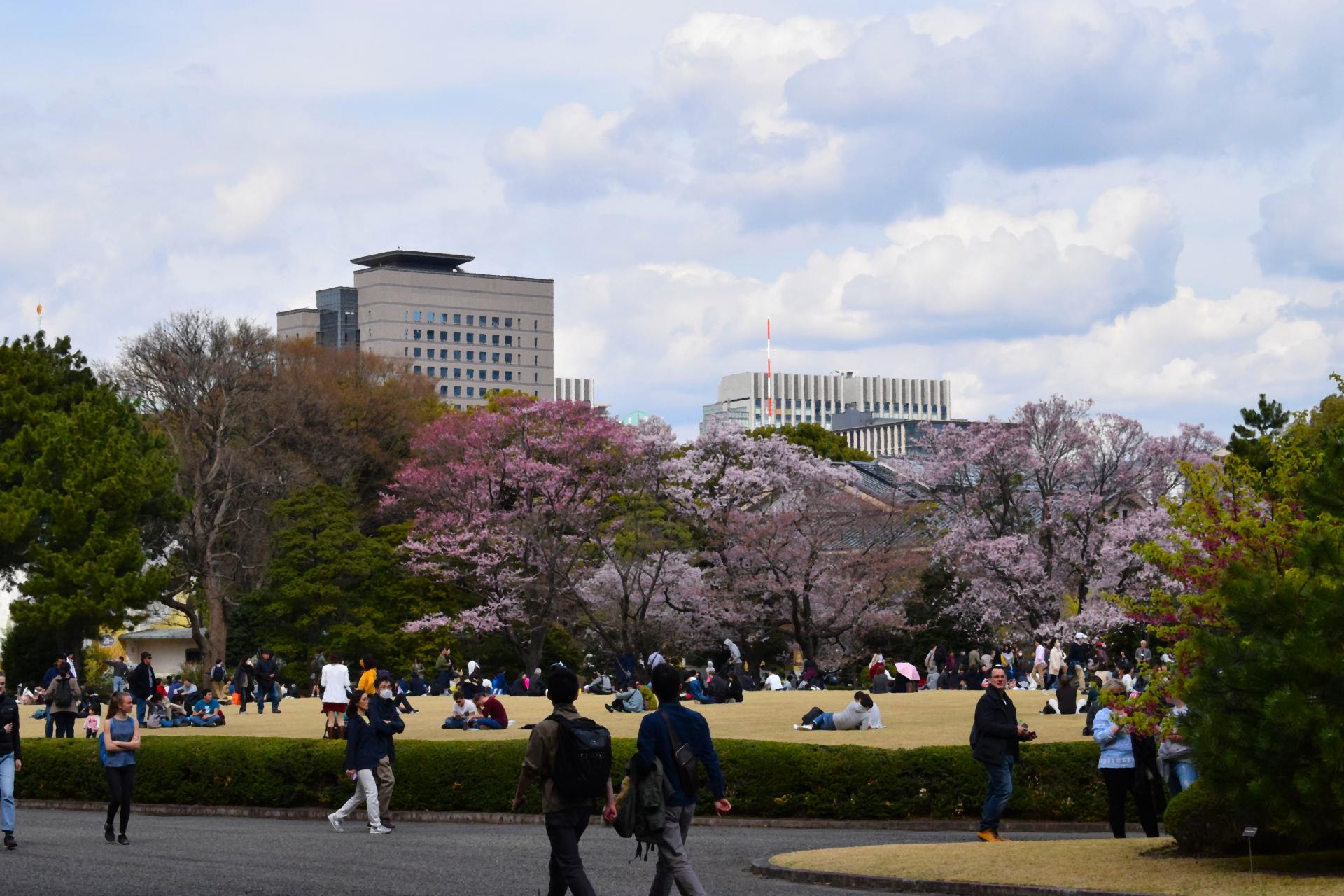
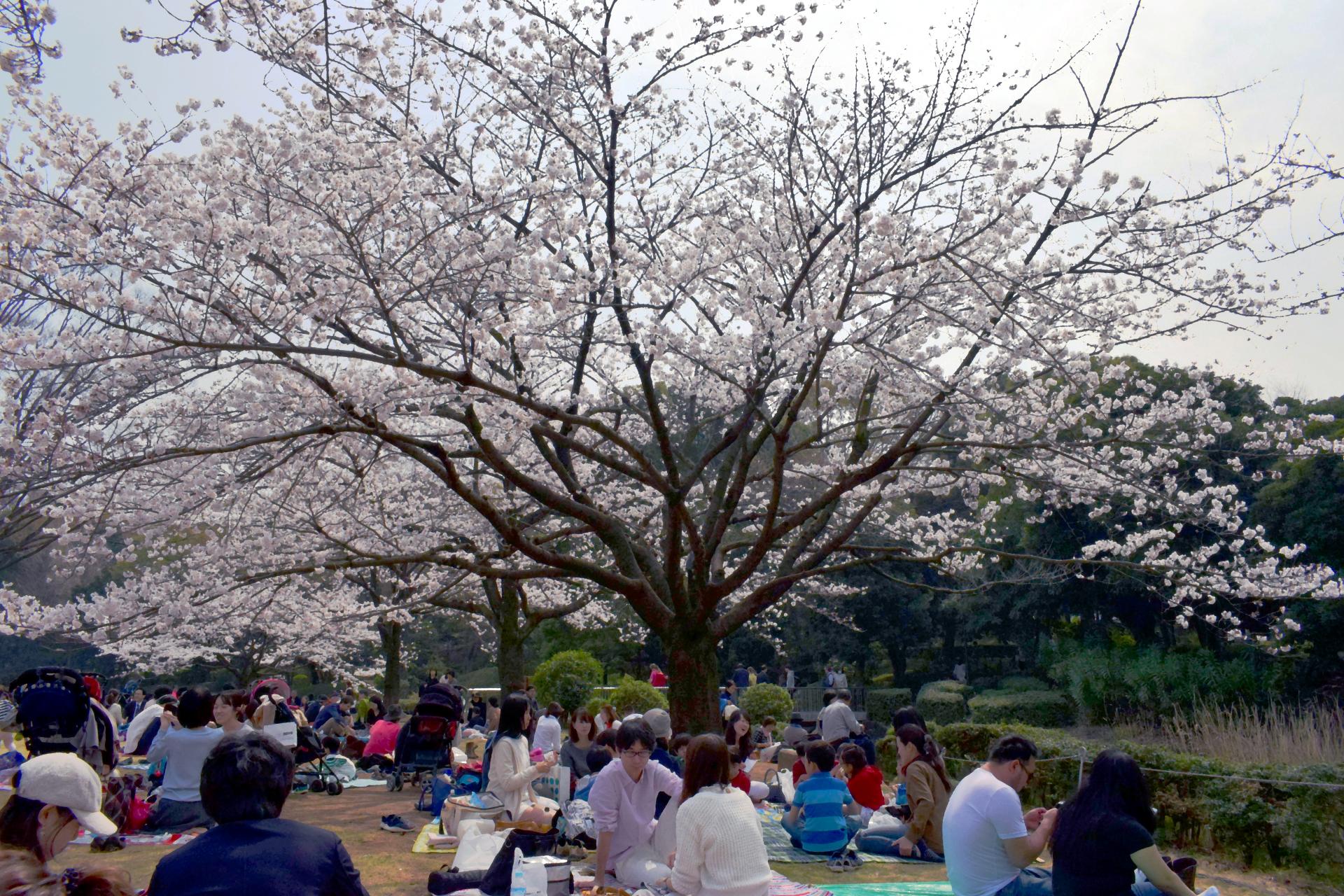
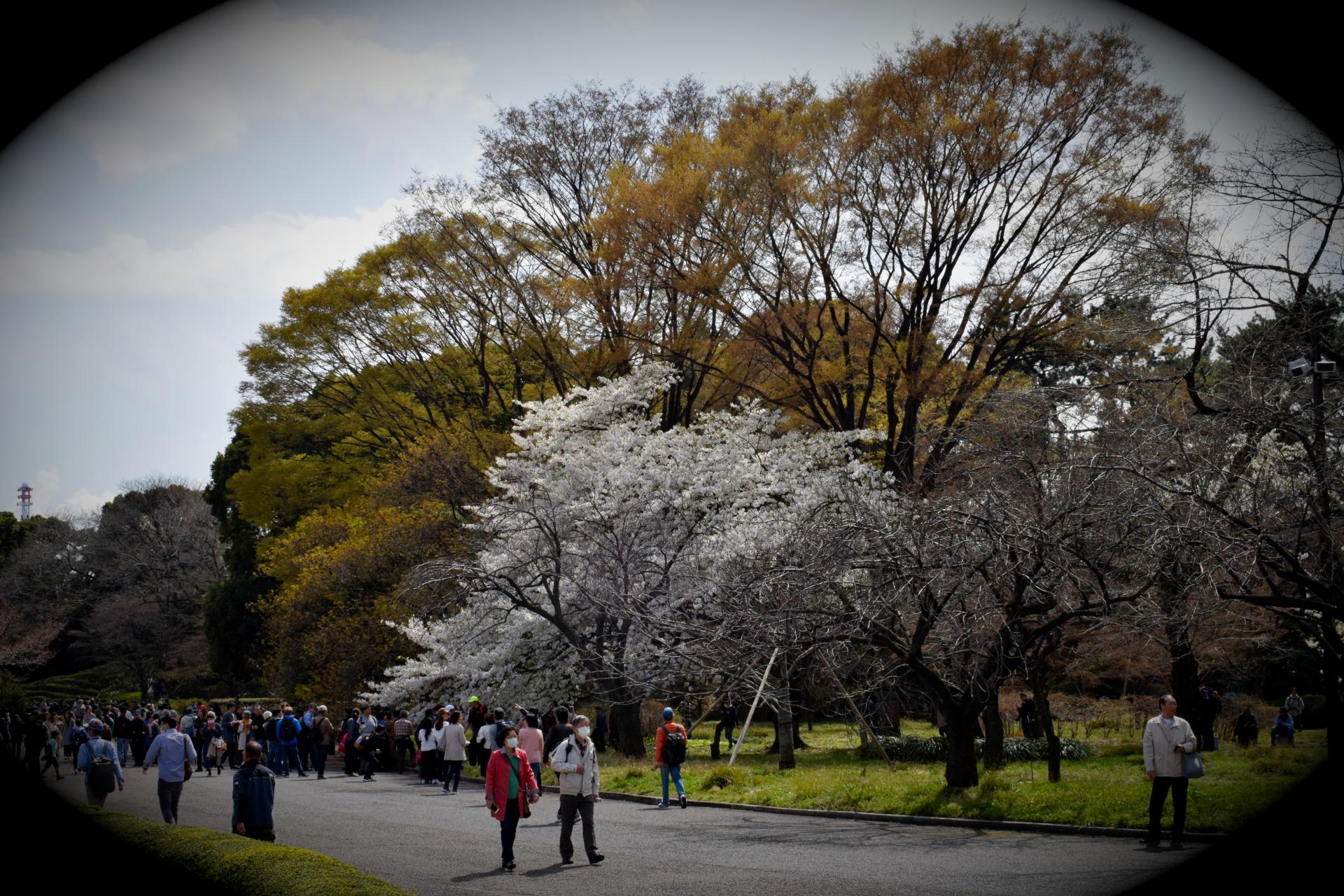
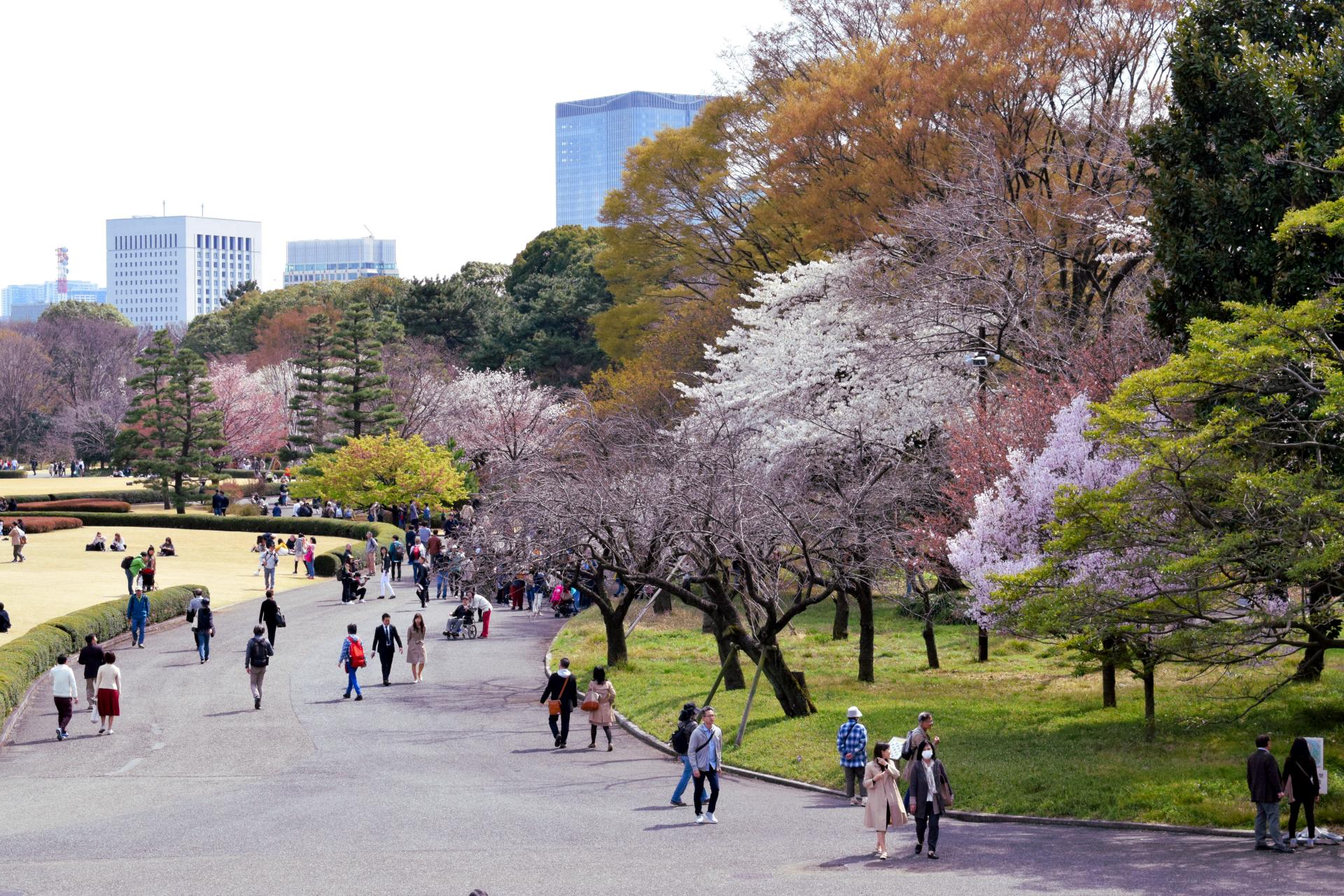
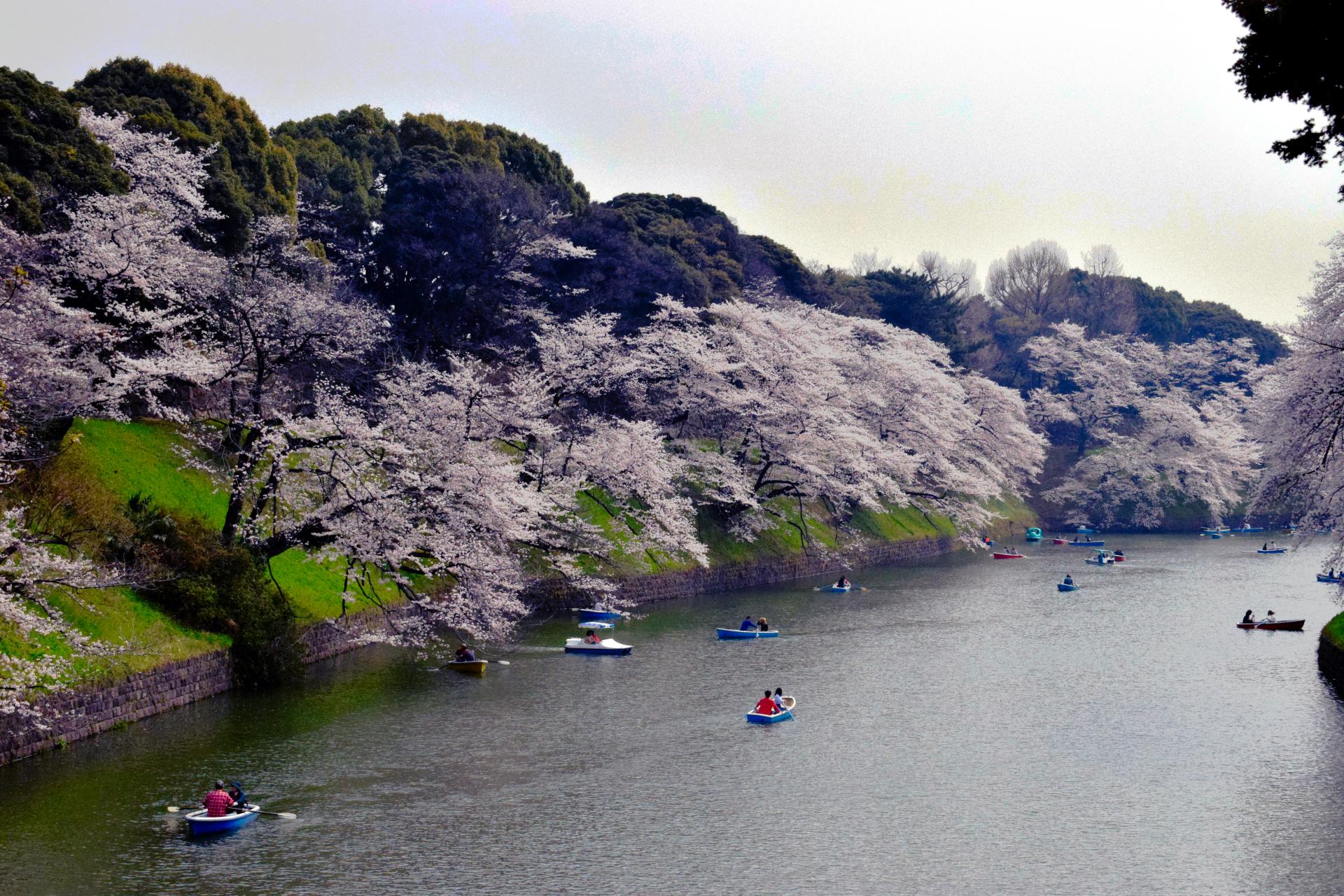
Despite being a ginormous city—or maybe because of it?—Tokyo has quite a number of parks, huge swaths of green where one can stroll and blissfully forget the surrounding jungle of concrete. And while I indeed went and got lost into a few of them (story for a next post), this was long after the sakura period (which only lasts a few days) had passed. But, following the suggestion of a flatmate, there was another place I went for sakura-seeing: Naka-meguro. Much like an über-scaled Venice, Tokyo has a lot of streams streaking inside it, and here was a place where you could enjoy the cherry trees bending and sloshing over the water.
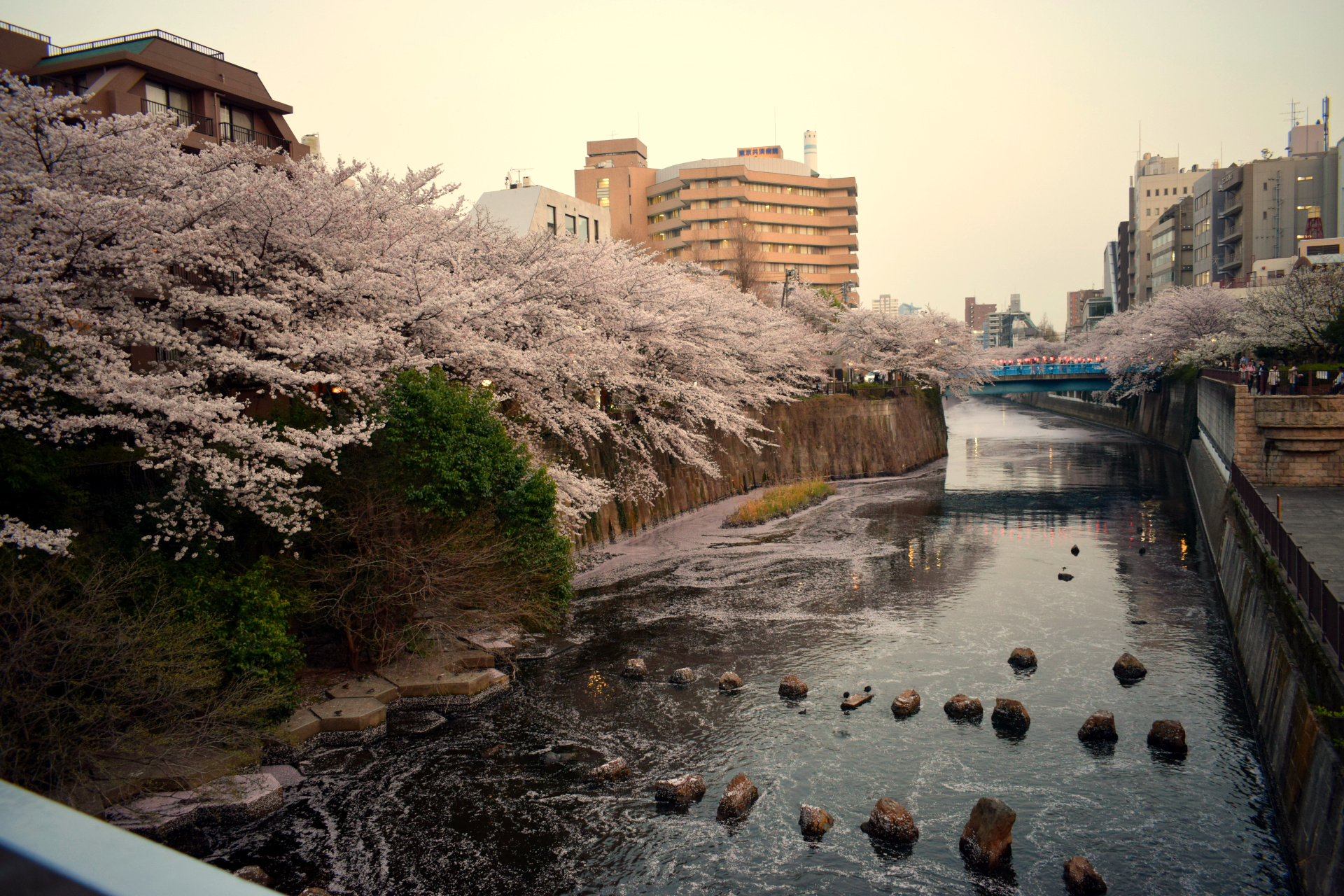
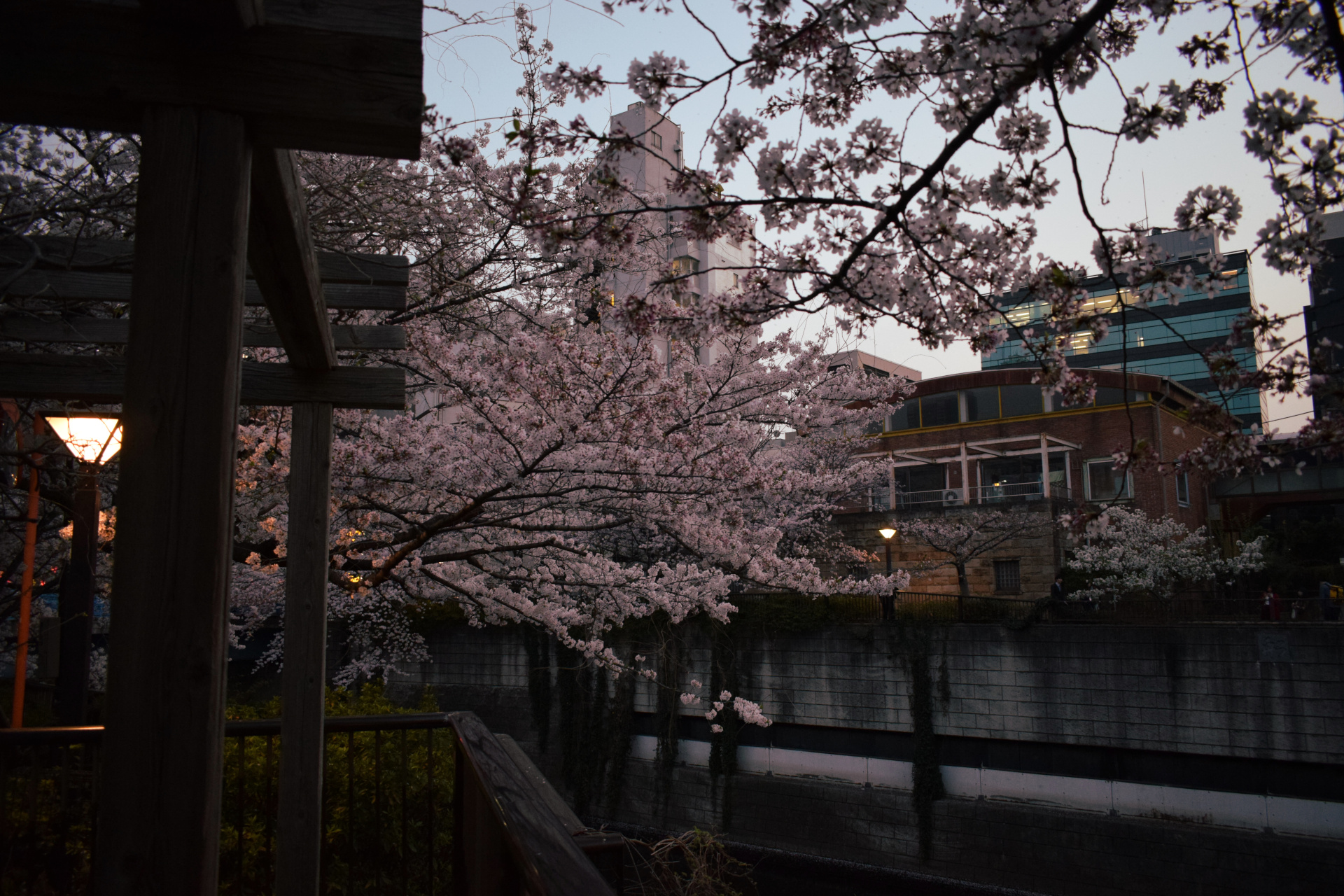
I got there only a short period before sunset—miraculously, the place was not crowded!—and discovered that the night offers you no less beauty!
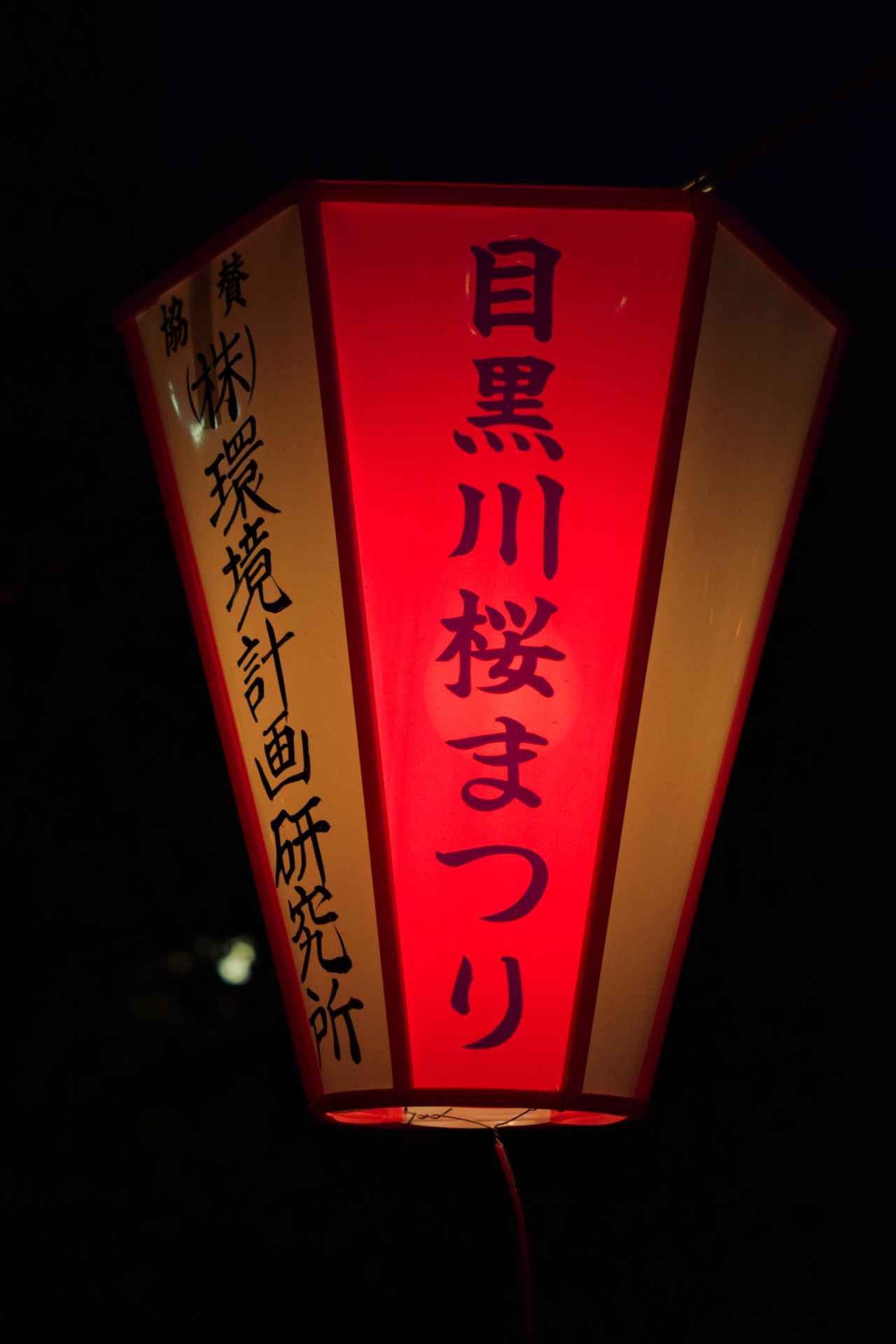
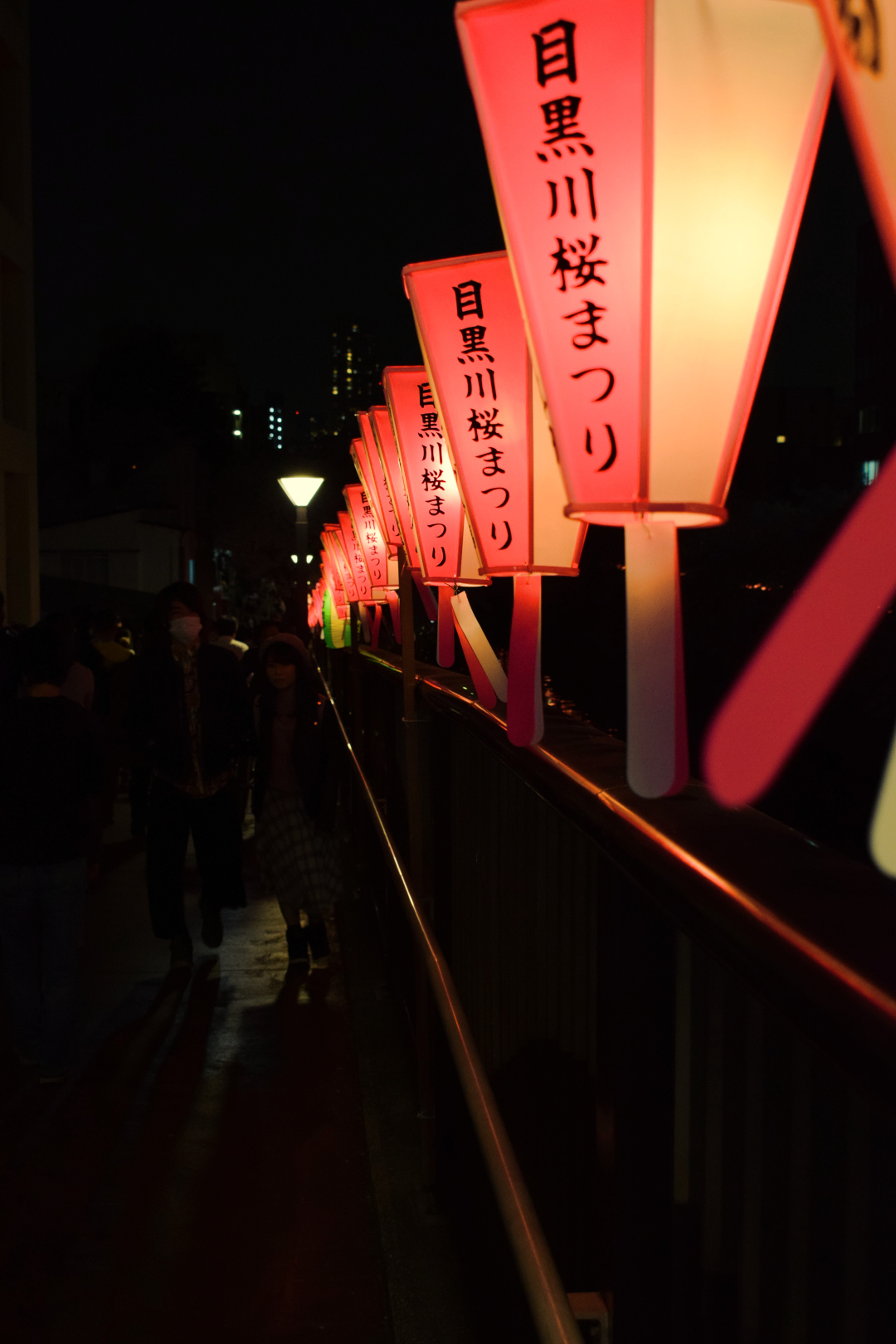
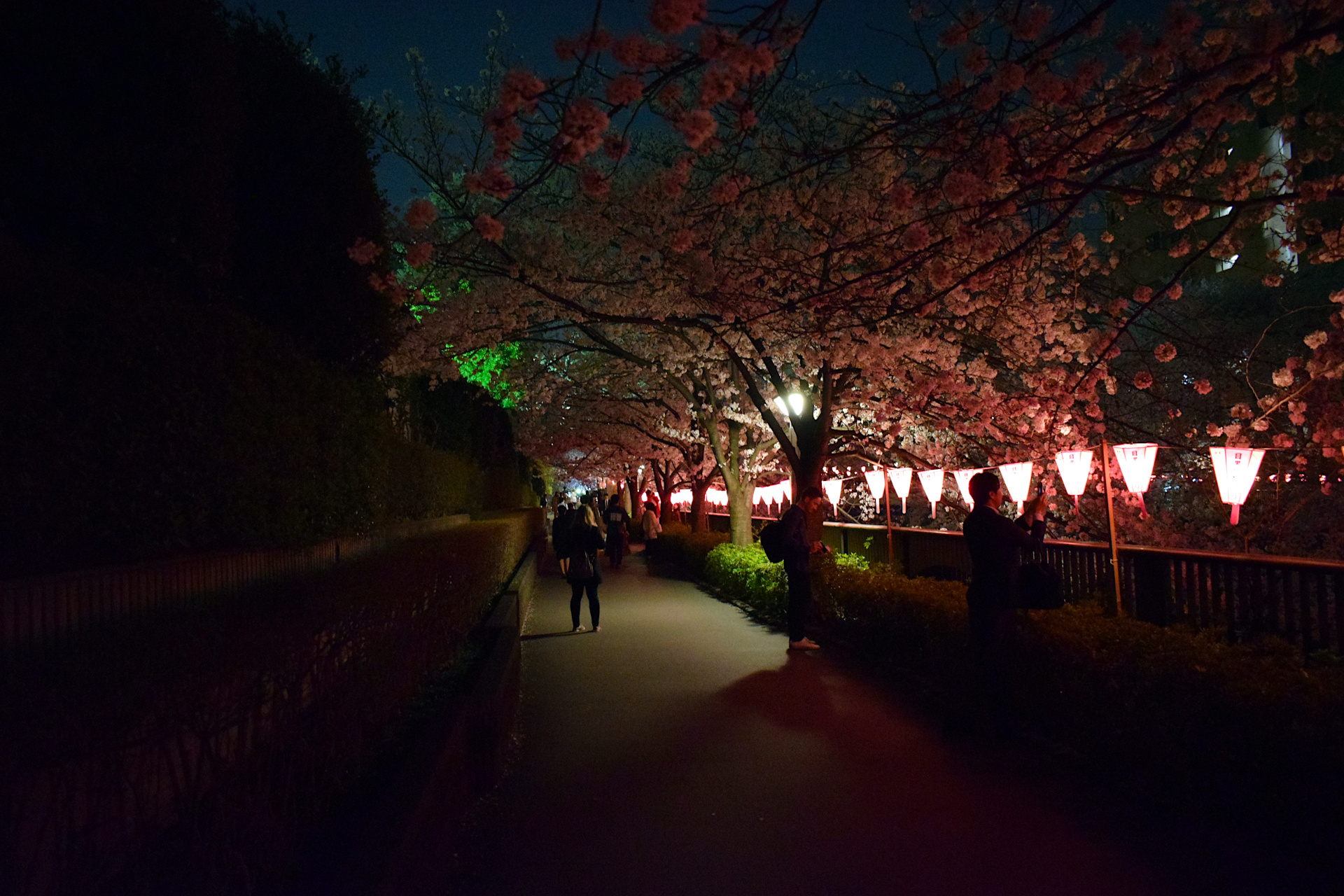
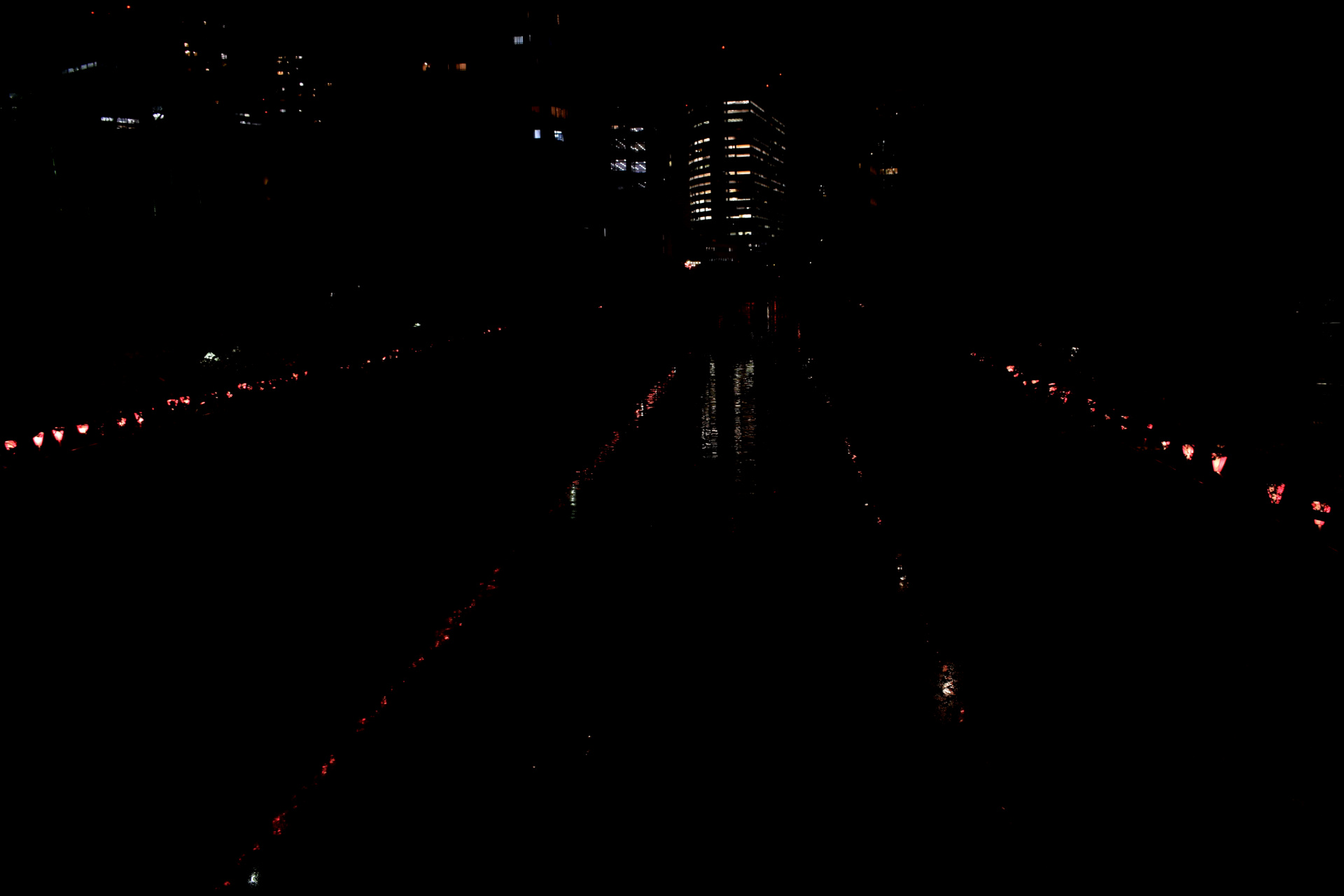
There was another place where I went sakura-seeing: Hibiya park. This was actually organised by the housing agency, but honestly, it was a bit of a letdown, because Hibiya does not have that many trees, so there could never be that much sakura to see… Considering the agency’s name is Sakura-house, I expected a bit more…
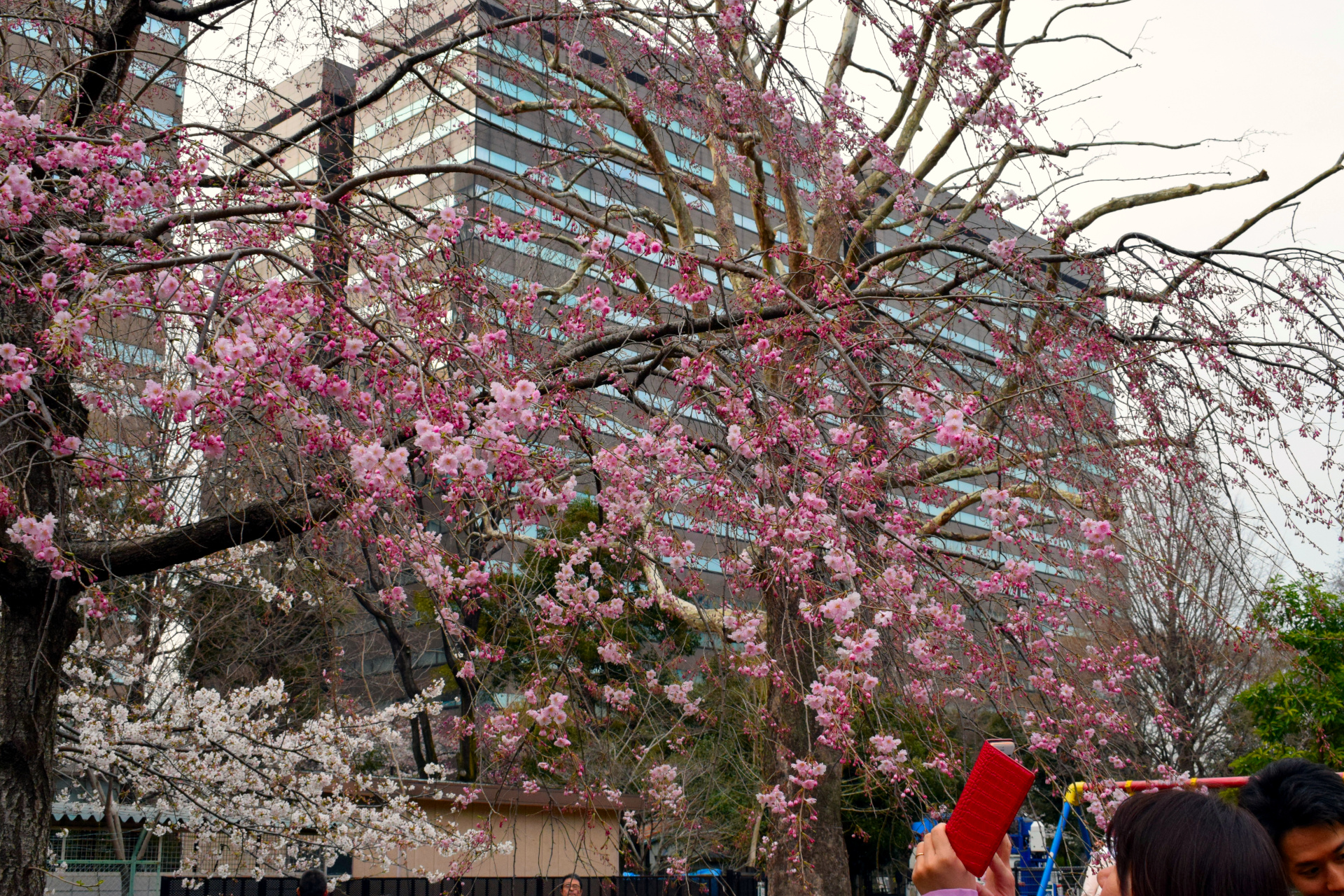
All the talk so far might convey the impression that sakura is a “park-only” phenomenon—but nothing could be further from the truth:
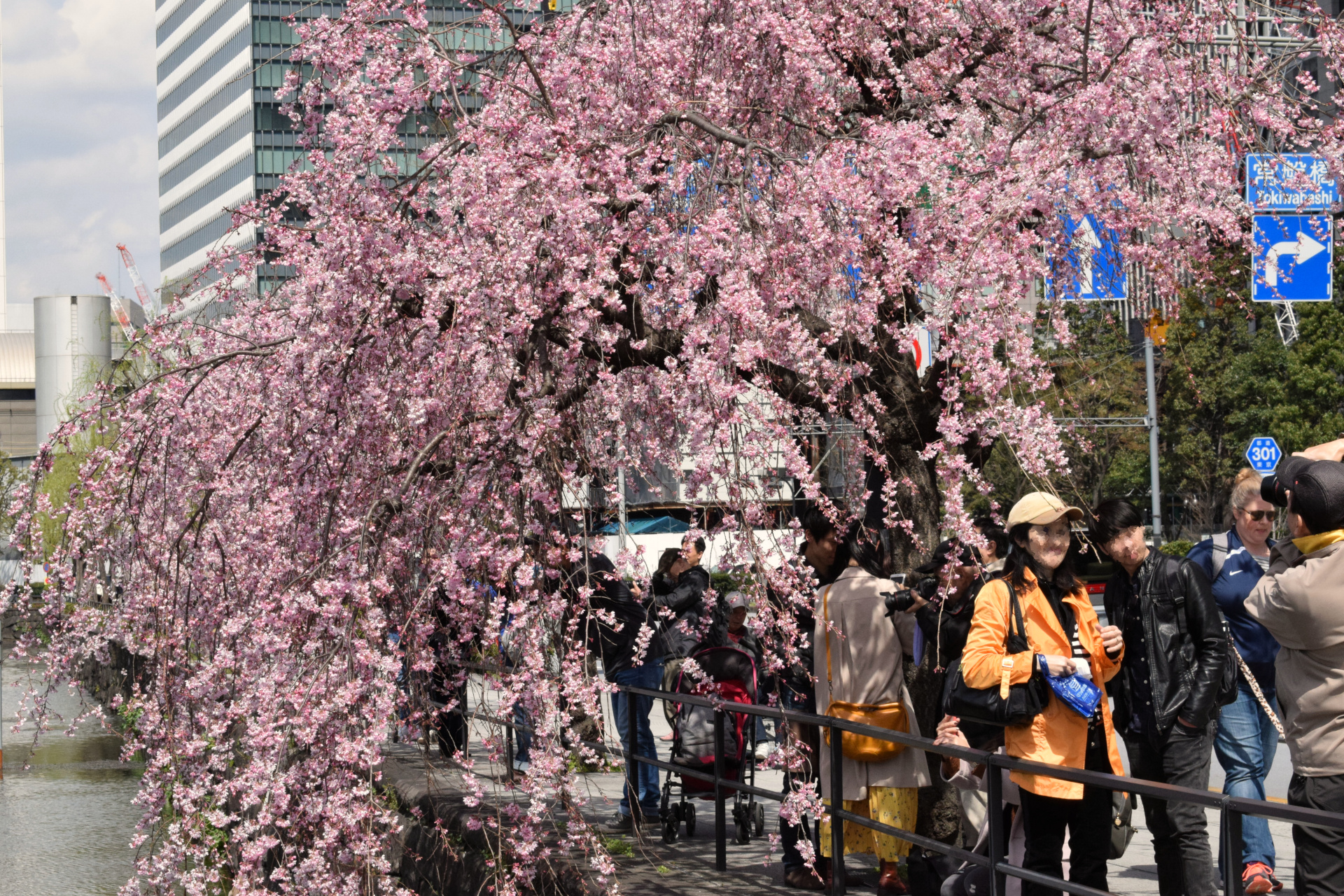
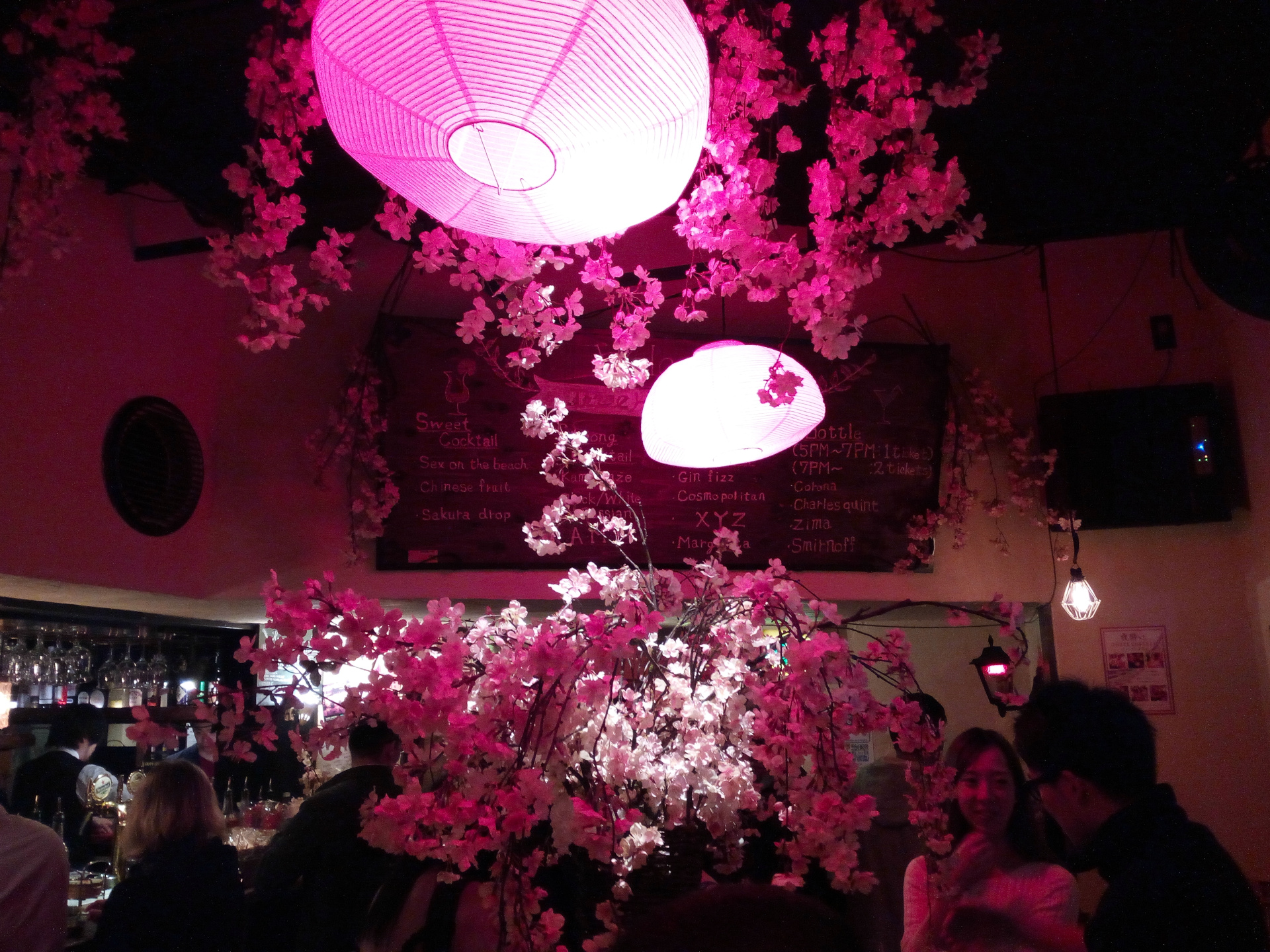
Moving on, one of the biggest peculiarities of Japan, the indescribable mixture of modernity and tradition, is exacerbated in Tokyo: being one the world’s most modern cities, it is nevertheless very common to see the old and modern, both in style and actually construction age, side by side.
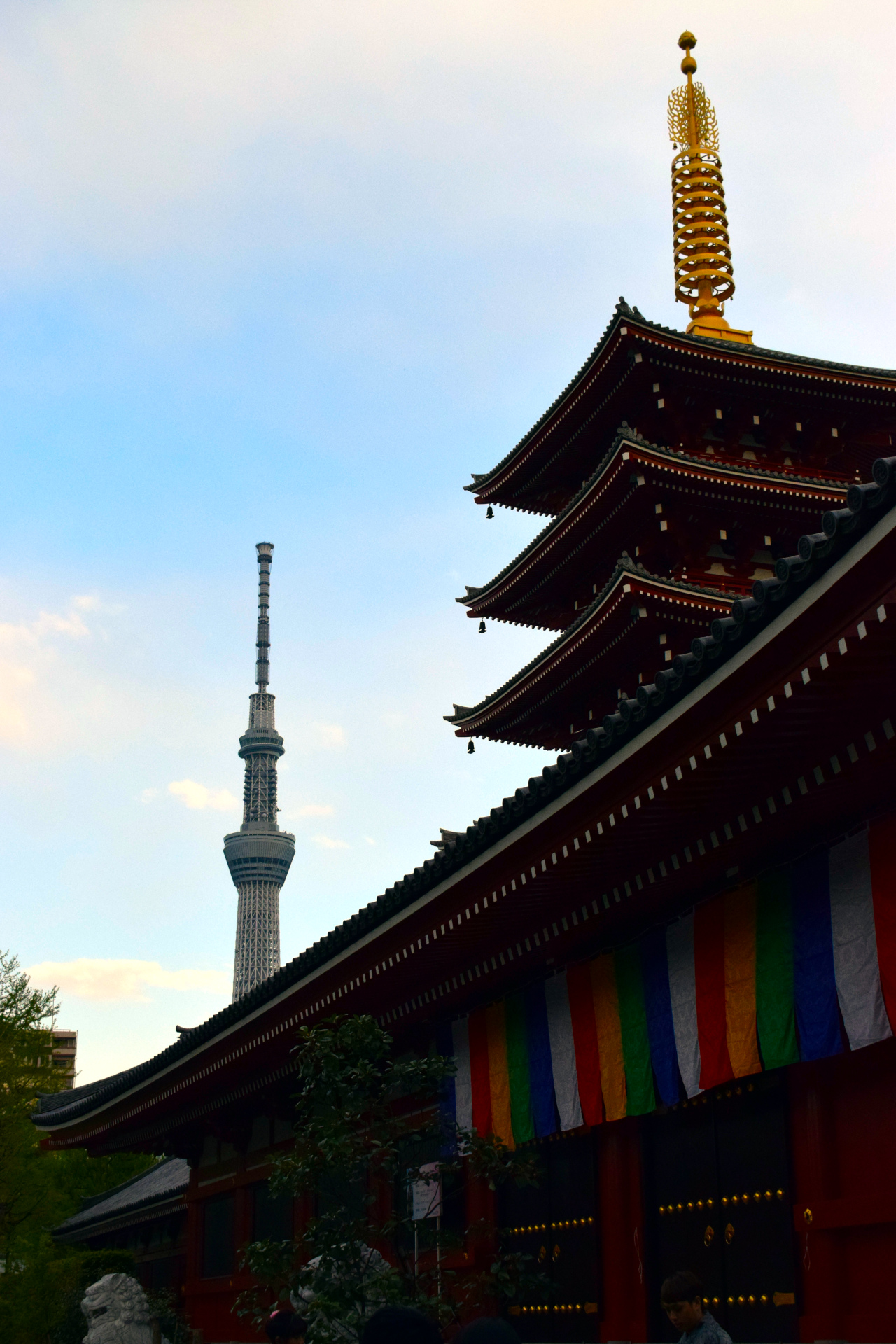
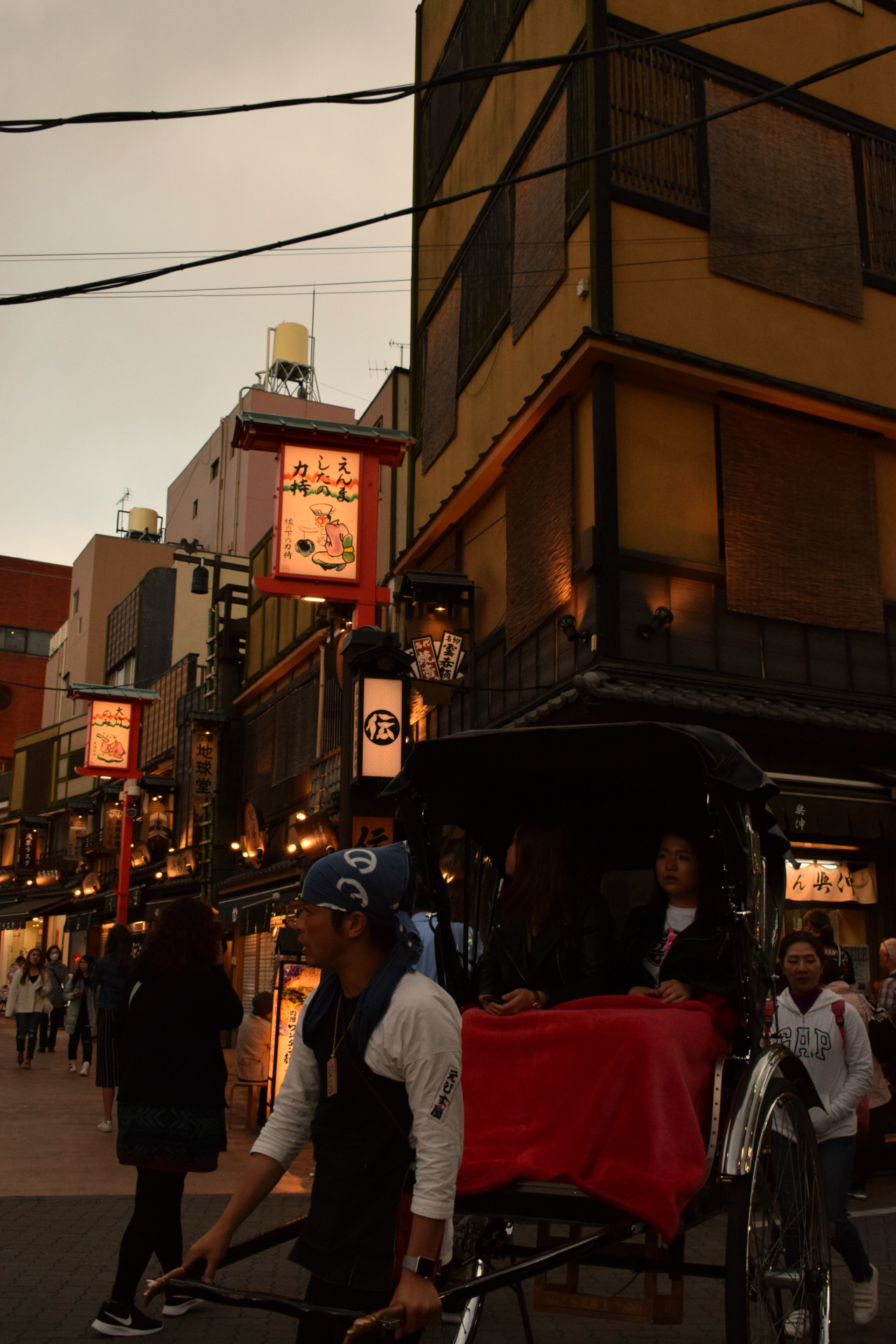
But alas, this post is getting too big (and taking too long to write…). So, while there are still some more things I want to say about Tokyo, let’s leave that for another text, and get back to my initial days in Tokyo.
Back to the beginning…
Right, so to recap, arrive on Friday, first full day at the office on next Tuesday, and then… it was Friday again. I thought it would be a good opportunity to, you know, get to know the new colleagues (all also foreigners), go out to dinner somewhere, and maybe a stint at a bar afterwards—which goes on to show that one really must be careful with what he wishes for.
It turned out that there already was a… ahem… night out, planned. An outline of the plan was more or less (emphasis on the “less”) like this: go out to have takoyaki (a sort of deep-fried dumpling made of octopus) for dinner, on a food stall on the street, then go to visit (ipso verbo!) a famous, seven-storey high, sex-shop in the Akihabara district, and go to a maid cafe and have something more to eat over there. Me being the inconvenient person that everyone knows and loves, I pointed out that 1) it was raining, so eating on the street, maybe not the best of ideas (and was then told that that part was optional); and 2) food in a maid cafe will likely be (over)pricey (and was then told that maybe so, but the beers would be cheap). You can probably see where this is going…
Eating takoyaki under the rain was indeed most inconvenient, and like all food portions in Japan, it leaves you nowhere close to satiety (I basically starved for three months). The sex-shop is indeed seven-story high, but each floor is small, and it gets smaller as you go up (and weirder, but that’s another story). As there are floors that are specific to men, and others to women, we agreed to meet downstairs in fifteen minutes’ time. We each went our way, and fifteen minutes later I dutifully went down—and found myself on the street, completely by myself: no sign of my colleagues. So I decided to wait, and ten minutes pass, and still no sign of them. Remember I had just been in Japan for a week, and I did not have anyone’s numbers (we used a Korean app, Line, to chat, which does not require a SIM card, but it does require mobile data, which I did not have). Nervously, I decided to take a quick glance around the block, and then come back. Luckily, I then ran into one of the girls, and asked where the hell was everyone! “All the other girls are still in the sex-shop!” Facepalm, if ever there was one.
Anyway, after we all got back together again, we ended up on the maid cafe, and this was next on menu:
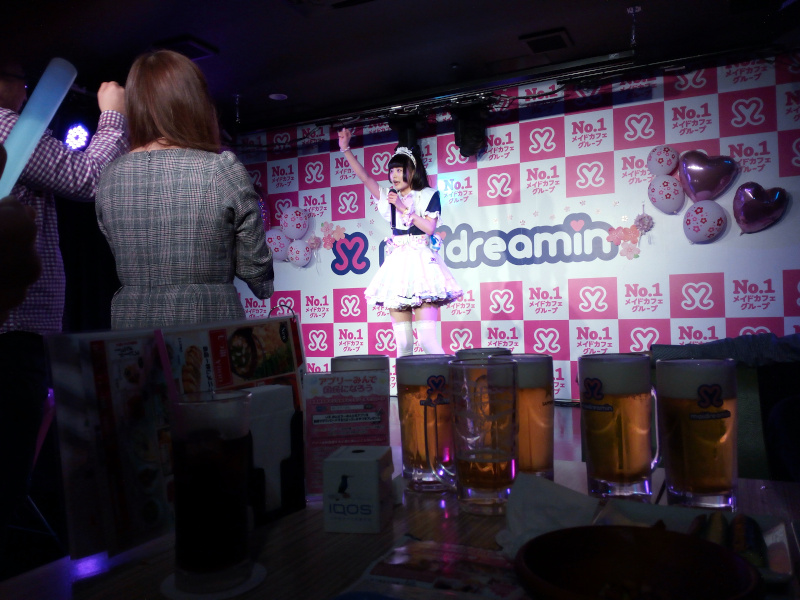
I was later told that the particular maid cafe we went to was one of the more mainstream ones, but I was still quite shocked to see grown men, many probably family men, behave like pre-pubescent teenagers, let of the leash. Imagine the scenario: young doll-ish looking girls singing and dancing on-stage (and often off-stage, amidst the crowd), and adult men singing, shouting, kicking, calling them, indeed yelling for them, like teenagers watching their idol for the very first time. I still have a vivid image of a guy in his 50s doing push-ups (!!!) at the feet of one of the girls—if that’s not teenage bravado, I don’t know what is.
Anyway, eventually it was time to leave, and then I made a most important discovery: the subway closes at midnight (it was way past midnight). So we figured that instead of spending money on a cab, we might as well walk to a bar nearby, and have some more pints, while waiting for the 6AM metro to go home. And guess what?! Before I knew it, four Japanese young women had come to talk to me!! And not the usual chat-up chit-chat either; they went to the point: “are you working here?”, “are you living here?”, basically, “are you here to stay?” (though none of them phrased it like that—well, that I remember). The writing on the wall was fairly obvious, but still, gaijin for the win! :D
Alas, the night came and went, and when I finally arrived home, the sky was already pre-sunrise crimson. And so I spent the rest of my second weekend in Nihon-land recovering from lack of sleep—again!—and started my second week thinking that, as I was not going to be there for that long, this would be all of “weird Japan” I would get to see.
Oh, little did I know…
The complete albuns
The story continues in part ii, but in the meantime, here are Tokyo’s photo albums:
## The top image depicts mount Fuji, photographed while on the Shinkansen to Kyoto. The photo as shown is basically the original, after gimp’s “equalise” operation. Not bad, for a photo taken in a bullet train, uh? ##
March 17, 2019.
